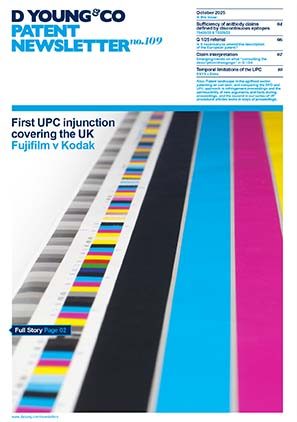Here comes the money…making sure to monetise your patenting and research efforts
When it comes to obtaining patents, quite rightly one of the prime considerations is ensuring that the relevant technical improvements are being protected, to hinder third parties from copying these improvements. At least in the UK however, often overlooked are the numerous schemes provided by the UK Government which deliver financial incentives through tax savings to those entities which make use of the patenting process and/or which perform associated research and development.
Patent Box
The first of such tax saving schemes is the UK Patent Box, which enables companies to apply a lower rate of corporation tax to profits earned from patented inventions. At its full benefit, the Patent Box scheme allows for a proportion of such profits to be levied at a corporation tax rate of 10%, rather than the full 19% which might otherwise be levied.
The rules regarding when the Patent Box regime can be implemented are quite involved, such that a full analysis is beyond the remit of this article. At a condensed level however, the following considerations relating to the scheme are worth noting.
First, any company seeking use of the Patent Box scheme must be a qualifying company. In practice, this requires the company to own, or exclusively license-in, a patent which is granted by an allowable patent registry. Such registries currently include the UK Intellectual Property Office, the European Patent Office, and the German Patent Office, along with a select number of patent registries from other EEA member states.
Second, any such patent must have been associated with a qualifying development. The essence of this qualifying development condition is to limit access to the Patent Box scheme to companies which have been involved in associated innovation behind the patent in question.
Third, the Patent Box scheme does not allow for the entirety of profit/income relating to a patented invention to be subject to the reduced 10% corporation tax rate. Instead only a proportion of this income, the so-called ‘relevant income’, can be covered. In practice, this relevant income excludes profits nominally attributable to the company’s brand and marketing assets, but nonetheless includes:
- income deriving from selling patented products or products incorporating a patented invention;
- income from licensing out patent rights;
- income deriving from patent infringements;
- income resulting from damages or other compensation related to a patent right; and
- income resulting from the sale of a patent right.
Mindful of the potential savings to be had from the Patent Box scheme, it may well be that the scheme in itself provides sufficient justification to pursue patent protection in respect of a given innovative product, aside from any considerations of using the patent to prevent third parties from copying the product. Indeed, noting a patent can often last for up to 20 years from the date when it is first applied for, then for a successful patented product, the tax savings achieved under the Patent Box scheme for a given patent might more than cover the costs incurred in securing and maintaining the patent during its lifetime.
Research and development tax relief
Aside from the Patent Box scheme, the UK Government also provides for a number of tax-relief schemes for entities performing innovative research/projects in science and technology. This is aside from whether or not such projects result in a patent. Such schemes include:
- Small and medium sized enterprises (SME) research and development relief; and
- Research and development expenditure credit.
The SME R&D relief scheme is nominally applicable to smaller enterprises, that is, those comprising fewer than 500 staff, and with a turnover of under €100m or a balance sheet total under €86m. Under the scheme, it is possible to obtain additional tax relief on a proportion of an enterprise’s cost which relates to innovative research or projects in science and technology. This additional tax relief is levied at 130% of the proportion of such R&D qualifying costs. Put differently, if a qualifying R&D spend under the scheme is deemed as being £100,000 for a given year, for a profit making enterprise this might translate to a tax saving for the year of £24,700 (130% of £100,000, then reduced to 19% which is the nominal level of UK corporation tax).
Another tax-relief scheme is the research and development expenditure credit (RDEC) scheme, which is in many respects a less generous scheme than the SME R&D relief scheme, since the RDEC scheme provides a lesser tax credit calculated at 12% of a company’s qualifying R&D expenditure. To put this roughly in context, for a qualifying R&D spend from a given year of £100,000, this might translate to a tax saving for a profit making company under the RDEC scheme of £9,720 (12% of £100,000, less 19% to account for UK corporation tax). Nonetheless, whilst being less generous than the SME R&D relief scheme, the RDEC scheme is nominally open to a wider range of entities beyond SMEs.
Summary
If your company would be interested in accessing the benefits of any of these schemes, we would encourage you to consult a duly qualified financial adviser who is authorised to provide advice on such tax schemes.
Meanwhile, for guidance on how the patent process might help protect any upcoming innovations in your company (which might result in one or more patents useable under the above Patent Box scheme), do not hesitate to contact one of our attorneys who would be pleased to advise. Similarly, if you already have a product that may be protected by an existing patent or pending application, we would be happy to advise on whether and to what extent those products and services are covered by eligible IP rights.
Finally, even if the above schemes are not deemed as being of current importance to the operations of your company, it pays to be aware of the existence of these schemes, in case they are of use for any new R&D/patent operations that might be considered in the future.


